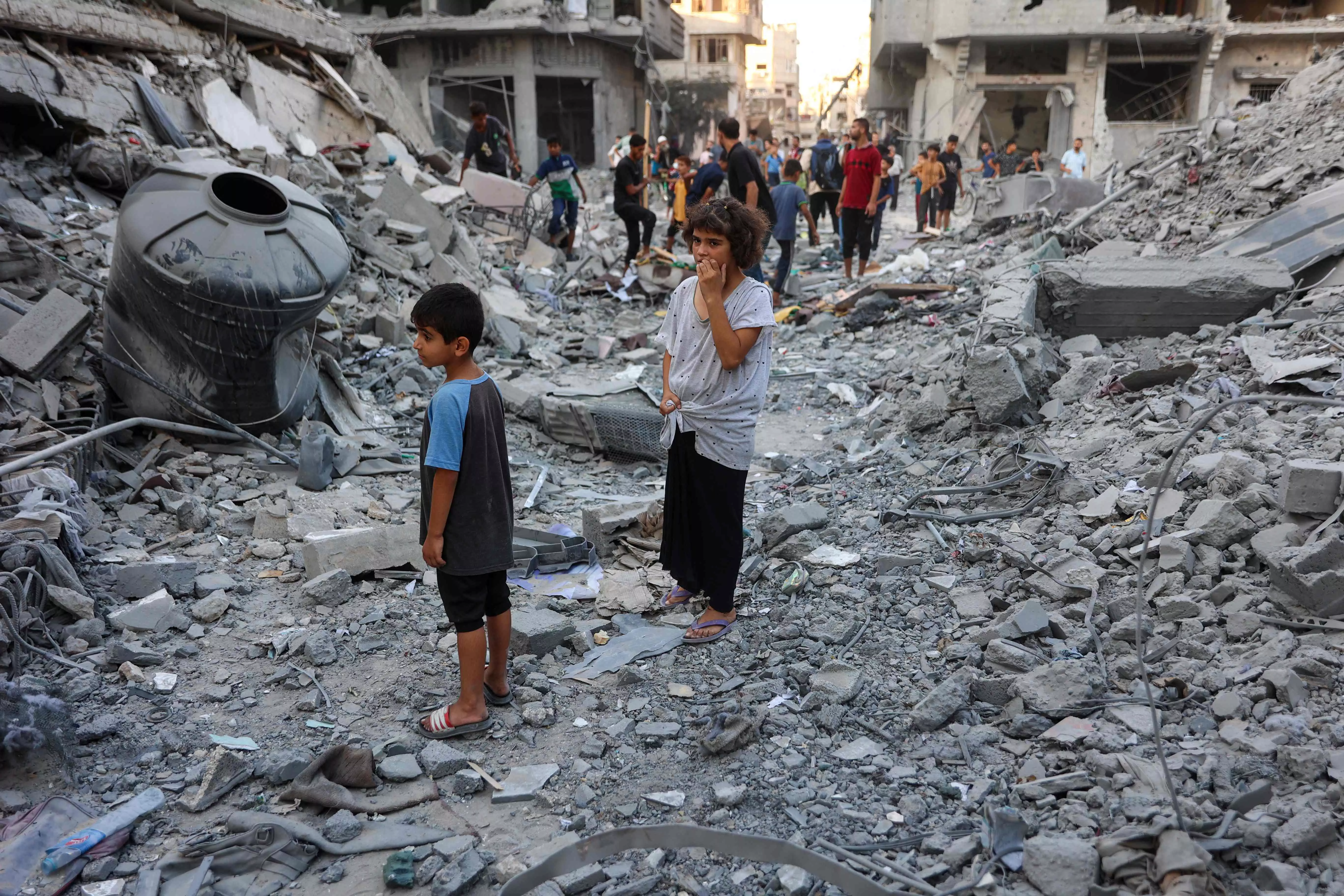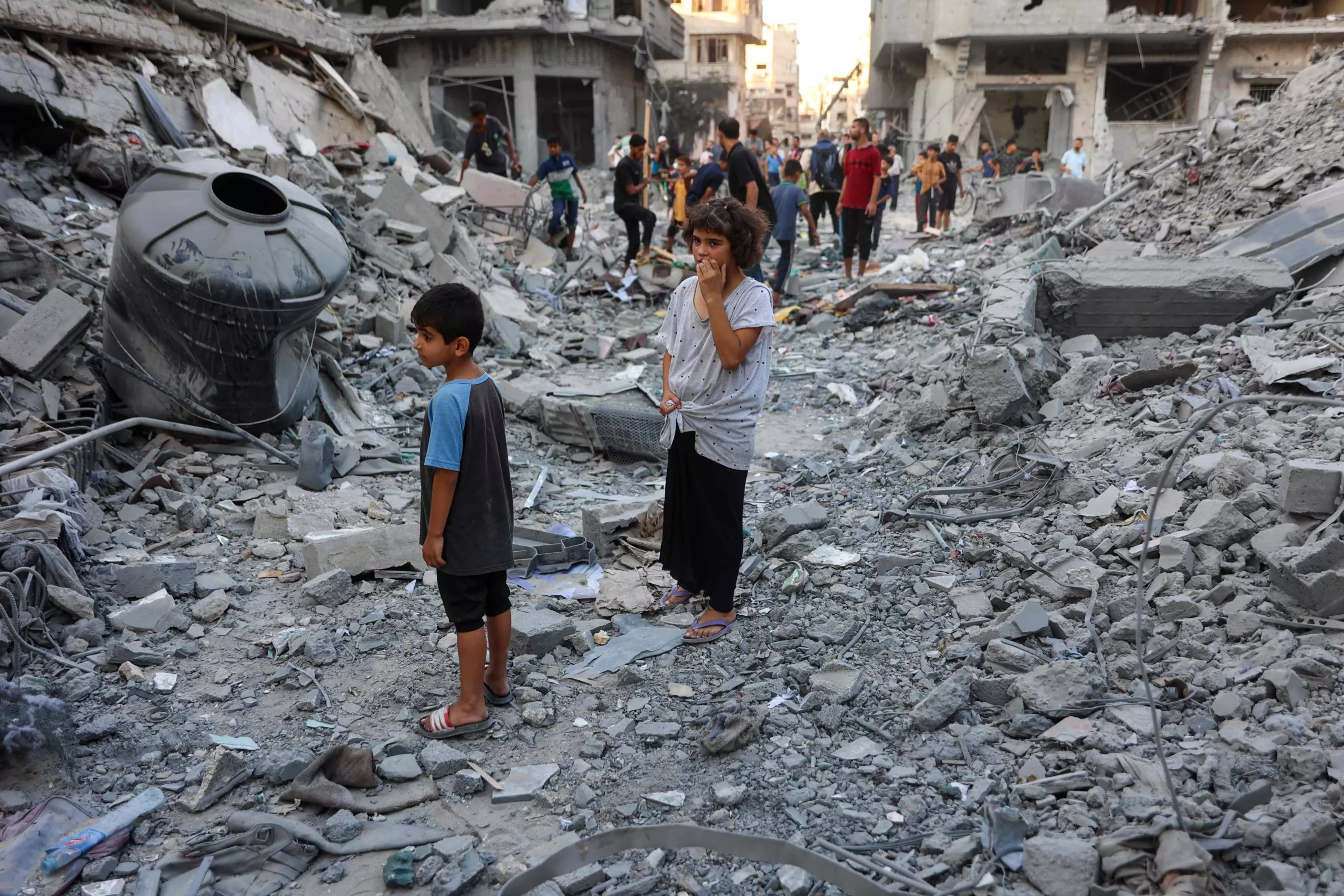
The statement from the Palestinian group, whose October 7 attack on Israel triggered the war, came a day after one of the deadliest reported Israeli strikes on the besieged Gaza Strip in more than 10 months of war.
International mediators had invited Israel and Hamas to resume talks towards a long-sought truce and hostage-release deal, after the fighting in Gaza and the killings of Iran-aligned militant leaders sparked fears of a wider conflict.
Israel, whose Prime Minister Benjamin Netanyahu has been accused of prolonging the war for political gain, has accepted the invitation from the United States, Qatar and Egypt for a round of talks planned for Thursday.
Hamas said Sunday it wanted the implementation of a truce plan laid out by Biden on May 31 and later endorsed by the UN Security Council, “rather than going through more negotiation rounds or new proposals”.
Hamas “demands that the mediators present a plan to implement what they proposed to the movement… based on Biden’s vision and the UN Security Council resolution, and compel the (Israeli) occupation to comply”, it said.
Unveiling the plan, Biden had called it a three-phase “roadmap to an enduring ceasefire and the release of all hostages”, and said it was an Israeli proposal. Mediation efforts since then have failed to produce an agreement.
Hamas on Tuesday named its Gaza chief Yahya Sinwar to succeed slain political leader and truce negotiator Ismail Haniyeh, killed July 31 in Tehran in an attack blamed on Israel, which has not claimed responsibility.
Haniyeh’s killing, just hours after Israel assassinated the military chief of Lebanese Hamas ally Hezbollah in a strike on Beirut, spurred intense diplomacy to avert a wider war in the Middle East.
In Khan Yunis, southern Gaza’s main city already ravaged by months of bombardment and battles, AFP journalists said hundreds of Palestinians had fled northern neighbourhoods after Israel issued fresh evacuation orders.
The military dropped leaflets and sent mobile phone messages warning of “dangerous combat” in Al-Jalaa district and telling Palestinian residents to leave the area, which until Sunday had been designated a humanitarian safe zone.
Similar evacuation orders have preceded major military incursions, often forcing Palestinians displaced numerous times by the war to pack up and leave.
Three-phase plan
The military said in a statement its forces were “about to operate against the terrorist organisations in the area”.
It came a day after civil defence rescuers in the Hamas-run territory said an Israeli air strike killed 93 people at a school housing displaced Palestinians, sparking international condemnation.
Israel said it targeted militants operating out of Gaza City’s Al-Tabieen school and mosque with “precise munitions”, declaring that “at least 19 Hamas and Islamic Jihad terrorists were eliminated”.
Mahmud Bassal, spokesman for the civil defence agency, said on Sunday that identifying the victims could take at least two days as “we have many bodies torn into pieces” and “shredded or burnt by the bombs”.
Hamas in its Sunday statement cited the Israeli “massacre against the displaced at Al-Tabieen school” and “our responsibilities towards our people and their interests” as the reasons for its announcement.
The Gaza war began with Hamas’s October 7 attack on southern Israel which resulted in the deaths of 1,198 people, mostly civilians, according to an AFP tally based on official Israeli figures.
Militants also seized 251 people, 111 of whom are still held captive in Gaza, including 39 the military says are dead.
Israel’s retaliatory military offensive in Gaza has killed at least 39,790 people, according to the territory’s health ministry, which does not provide details on civilian and militant deaths.
Biden said the first phase of the proposed roadmap includes a “full and complete ceasefire” lasting six weeks, with Israeli forces withdrawing from “all populated areas of Gaza” and some hostages freed in exchange for Palestinian prisoners held by Israel.
The second phase would see the remaining living hostages released as the warring sides negotiate “a permanent end to hostilities”, followed by “a major reconstruction plan for Gaza” and the return of dead hostages’ remains.
‘Have to go somewhere’
Hamas officials, some analysts and critics in Israel have said Netanyahu has sought to prolong the fighting for political gain.
Iran, Hamas, Hezbollah and other regional allies have vowed retaliation for Haniyeh’s killing and that of Hezbollah’s military chief Fuad Shukr.
Biden, asked what his message was to Iran, responded: “Don’t.”
US Defense Secretary Lloyd Austin ordered an aircraft carrier group to hasten its arrival in the Middle East, the Pentagon said Sunday.
Austin also ordered the USS Georgia guided missile submarine to the area, a Pentagon spokesman said.
The UN agency for Palestinian refugees, UNRWA, said that “just in the past few days, more than 75,000 people have been displaced in southwest Gaza”, where Khan Yunis is located.
The entire Gaza Strip has a population of about 2.4 million people.
Umm Sami Shahada, a 55-year-old displaced Palestinian, said she had “fled Gaza City at the start of the war for Khan Yunis”, hoping to find shelter.
“My daughter was killed in bombardment, so we went to Rafah, then we came back here, and now with this new evacuation order we don’t know where to go,” she said.
Families gathered their meagre belongings as crowds of people left Al-Jalaa, some loading mattresses, clothing and cooking utensils into pick-up trucks. Others took to the road on foot or left on donkey-drawn carts.
Majd Ayyad, displaced from Gaza City, said: “We have to go somewhere, and we don’t know if it will be good or bad.”
